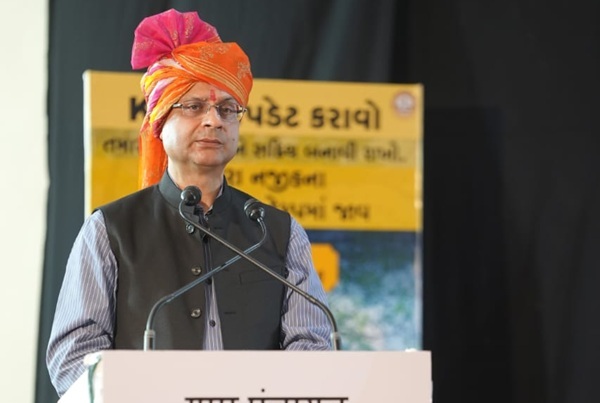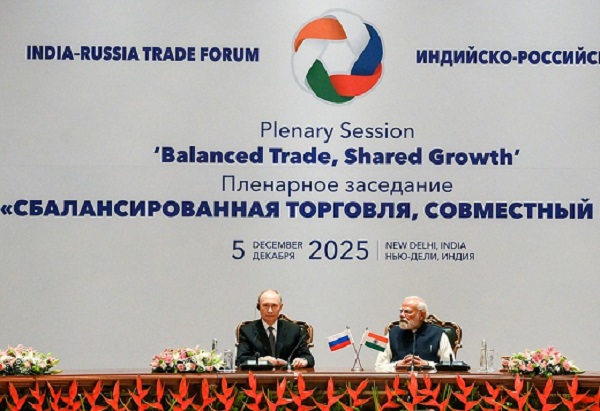.png)
August 13, 2025 at 10:04 AM IST
Fifteen years apart, two Reserve Bank of India Governors walked into two villages with the same purpose but in utterly different worlds. In 2009, Duvvuri Subbarao stood in Jalanga, Odisha, urging the unbanked to step into the financial fold. In 2025, Sanjay Malhotra arrived in Gozaria, Gujarat, speaking not of first accounts but of keeping them alive, secure, and digitally literate.
Subbarao’s challenge was persuasion: coaxing banks into underserved geographies and building the skeletal architecture of financial inclusion. Malhotra’s is vigilance: ensuring the banked remain active participants in a system now dense with digital channels, instant payments, and fraud risks.
The continuity lies in the RBI’s belief that inclusion is not complete until the central bank leaves its headquarters and steps into the field.
Changing Priorities
On August 11, Malhotra joined a Gram Panchayat-level camp that was part of a three-month nationwide drive to mark the tenth anniversary of the Jan Dhan scheme. The agenda was not just re-KYC compliance for millions of accounts, but also enrolment in accident and life insurance, the Atal Pension Scheme, awareness on unclaimed deposits and grievance redress.
By mid-August, over 141,000 camps had been held and more than 3.5 million accounts updated. The push also responds to public frustration over accounts frozen for non-compliance with KYC rules, which in some cases has disrupted direct benefit transfers and welfare payouts. The RBI has reminded banks to avoid excessive disruption and to treat re-KYC as a service obligation, not just a regulatory checkbox.
In effect, the event was part service desk, part product pitch, and part financial education session.
In his address, Malhotra likened digital literacy to formal education. Opening an account, he said, was only the first step. The real benefit came when people used it to access the network of welfare schemes and financial products, from micro-insurance and pensions to small savings and credit, that could improve their resilience.
He also urged caution, noting the rise of “digital mules” who allow their bank accounts to be used by fraudsters to route illicit funds. This focus on safeguarding accounts is the product of a changed financial landscape.
Instant digital payments, UPI-linked wallets and Aadhaar-based authentication have brought convenience but also new vulnerabilities. Dormant or poorly monitored accounts can be exploited for phishing scams, investment fraud and cross-border mule networks.
Re-KYC has therefore become more than a compliance exercise. It is also a fraud-control measure to verify identities, refresh contact details and shut down compromised accounts.
Continuing Legacy
Subbarao’s 2009 Jalanga visit unfolded in a starkly different environment. Inclusion levels were low, infrastructure was patchy, and banks were wary of lending in areas with low volumes and high transaction costs.
As part of the RBI’s Platinum Jubilee outreach, he promoted no-frills accounts, the then-nascent business correspondent model, biometric smart cards and pilots for electronic benefit transfers. He met women’s self-help groups pooling savings to lend to members, showcasing how local credit models could build confidence and income stability.
These tours were, in Subbarao’s words, about “demystifying” the RBI to make it less of an ivory-tower monetary authority and more of a visible, accessible institution. They were also intended to change the RBI’s own culture, convincing officers that listening to citizens and understanding grassroots realities was integral to central banking. They signalled to banks, markets, and government departments that inclusion was not a token policy strand but part of the RBI’s identity.
That effort to open the central bank’s doors continues in different forms today, including through initiatives such as the new five-part documentary series RBI Unlocked: Beyond the Rupee on Disney+ Hotstar, aimed at explaining its role to a wider public.
Malhotra’s outreach inherits that symbolic function but is grounded in a different set of operational priorities. Banks no longer need convincing to open accounts. Instead, they are being pushed to keep those accounts active and connected to an ecosystem of products.
The emphasis now is on ensuring beneficiaries of the Atal Pension Scheme continue contributions, on expanding micro-insurance penetration, and on linking accounts to Direct Benefit Transfer flows without leakage.
Layered over all of this is the requirement to guard against misuse in an environment where the value of reported frauds has risen 18-fold even as the banking network has doubled in size.
These visits do more than deliver speeches. They provide the RBI leadership with unfiltered feedback on why accounts lapse into dormancy, why certain schemes are under-utilised, and what barriers keep people from using digital channels even when they have access.
They also make inclusion a monitored operational priority for banks, not just a line item in regulatory filings. And for the public, they put a human face to an institution that is often perceived as remote.
From Jalanga to Gozaria, the priorities have changed with the times, but the central idea has not. Financial inclusion is not complete when the numbers look good on paper. It is only complete when people use the system to protect and improve their lives.
Whether the task is to persuade the unbanked to open their first account or to remind the banked to guard their PIN, the RBI’s long walk to the people continues, adapting to new tools, new threats and new expectations, but anchored in the belief that seeing the ground is as important as setting the rules.
As Malhotra recently affirmed, the RBI’s raison d’être remains the interest and welfare of the people of India, especially those at the bottom of the pyramid. It is this principle — as much as any policy blueprint — that threads a line from a dusty afternoon in Jalanga to a camp in Gozaria.





